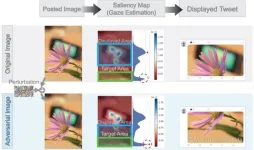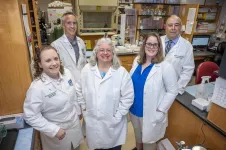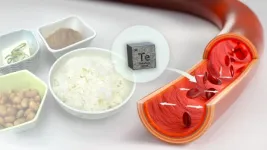(Press-News.org) Vaccines are safe and effective, and help reduce death and illness. But global vaccination rates are suboptimal and have trended downward, leaving humanity more vulnerable to vaccine-preventable diseases such as COVID-19, influenza, measles, polio, and HPV.
Identifying interventions that could increase vaccine coverage could help save lives. A new paper from a team led by researchers at the University of Pennsylvania offers the first comprehensive meta-analysis examining what types of vaccine intervention strategies have the greatest effect, and whether different intervention strategies work better in different countries.
“A systematic review and meta-analysis of strategies to promote vaccination uptake,” published August 1, 2024, in Nature Human Behaviour, analyzes the results of 88 eligible randomized-controlled trials testing interventions with 1,628,768 participants from 17 countries. Previous meta-analyses have been much more limited to specific vaccines, specific intervention strategies, or specific populations, and have therefore been unable to compare strategies or consider their relative effectiveness across regions.
“Figuring out which approaches help increase immunization and under what circumstances could help global public health leaders allocate resources more efficiently, and ultimately improve health outcomes,” said co-author Dolores Albarracín, the Amy Gutmann Penn Integrates Knowledge University Professor at the University of Pennsylvania and director of the Communication Science division at the university’s Annenberg Public Policy Center (APPC).
The researchers considered seven types of vaccine intervention strategies: increasing access to vaccination, sending vaccination reminders, providing incentives (e.g., money), supplying information, correcting misinformation, promoting active and passive motivation, and teaching behavioral skills.
Vaccination interventions that work
The researchers found that interventions were associated with an estimated 50 percent higher chance of vaccination than “control” conditions with no intervention. They also found that two interventions were most promising in improving vaccination uptake. There was a moderate effect of interventions to increase access to vaccines, particularly in countries with low access to and quality of health care. There was also a small effect from incentives, and non-significant effects of all other interventions examined. For example, informational and misinformation-correction interventions had no detectable effects on vaccination rates.
Interventions to increase access to vaccines included offering transportation assistance or bringing vaccines to recipients at sites like nursing homes, family homes, and workplaces. These strategies actually tripled the odds of vaccination and had even larger effects in lower income countries with fewer resources and access to health care.
The financial incentive interventions included, for example, a U.S. study that achieved an 85% influenza vaccination rate when physicians were reimbursed $1.60 per dose, compared with a 70% vaccination rate when they were reimbursed $0.80 per dose. However, both in this U.S. study and the estimates from the meta-analysis, the effects of incentives were quite small.
“Public health officials often say that ensuring vaccine access is the first step to promoting immunization,” Albarracín said. “Our meta-analysis provides hard evidence in support of this recommendation, and indicates that this should be a special priority in under-resourced areas with limited access to health care. By contrast, even though misinformation undermines democracy and can be far-fetched, and thus highly salient, correcting it does not ensure health behaviors like vaccination.”
The authors note that there are several important barriers to increasing access in underserved areas, but it is important to understand how crucial this form of intervention is.
In addition to Albarracín, "A systematic review and meta-analysis of strategies to promote vaccination uptake,” published Aug. 1, 2024, in Nature Human Behaviour, was authored by Sicong Liu, formerly a postdoctoral researcher in Albarracín's Social Action Lab at Penn and now a professor at the South China Normal University, Guangzhou, China; Marta Durantini, clinical research director of the Communication Science division at APPC; Christopher Calabrese, a former postdoctoral fellow at APPC and now an assistant professor at Clemson University; and Flor Sanchez, professor at the Universidad Autónoma de Madrid.
END
Comprehensive meta-analysis pinpoints what vaccination strategies different countries should adopt
2024-08-01
ELSE PRESS RELEASES FROM THIS DATE:
Predicting the future: Easy tool helps estimate fall risks
2024-08-01
Osaka, Japan — An aging society has posed a new global problem, the risk of falling. It is estimated that 1 in 3 adults over the age of 65 falls each year and the resulting injuries are becoming more prevalent.
To tackle this growing issue, Associate Professor Hiromitsu Toyoda and Specially Appointed Professor Tadashi Okano from Osaka Metropolitan University’s Graduate School of Medicine, together with Professor Chisato Hayashi from the University of Hyogo, have developed a formula and assessment tool for estimating fall risks that is simple for older adults to use. The tool was developed using data collected from older adults over a ten-year period from April 2010 to December ...
Eccentric-only resistance training can lower passive muscle stiffness
2024-08-01
Resistance, or weight training, is widely recommended in sports and rehabilitation as an effective exercise to increase muscular strength and size. This form of exercise involves applying resistance to muscle contraction to build strength. However, some practitioners believe resistance training can increase passive muscle stiffness over time. Passive muscle stiffness is a key indicator of how muscles behave mechanically when they are stretched without active contraction. Specifically, it refers to the amount of force required to change the muscle length by a given amount during passive stretching. Studies ...
Enhancing automatic image cropping models with advanced adversarial techniques
2024-08-01
Image cropping is an essential task in many contexts, right from social media and e-commerce to advanced computer vision applications. Cropping helps maintain image quality by avoiding unnecessary resizing, which can degrade the image and consume computational resources. It is also useful when an image needs to conform to a predetermined aspect ratio, such as in thumbnails. Over the past decade, engineers around the world have developed various machine learning (ML) models to automatically crop images. These models aim to crop an input image in a way that preserves its most relevant parts.
However, ...
$2.4 million grant helping MCG scientists better understand what happens to our skeleton as we age
2024-08-01
AUGUSTA, Ga. (Aug. 1, 2024) – Figuring out how the tissues in our bones, adrenal glands, muscle and fat “talk” to each other could help scientists better understand what happens to our skeletons with age, when our bones tend to lose mass and become weaker, leaving us at risk for falls and fractures.
“Tissues don’t function in isolation – everything in the body “talks” to everything else to keep people healthy across the lifespan,” explains Meghan McGee-Lawrence, PhD, bone biologist at the Medical College of Georgia at ...
Using AI, USC researchers pioneer a potential new immunotherapy approach for treating glioblastoma
2024-08-01
In an innovative new study of glioblastoma, scientists used artificial intelligence (AI) to reprogram cancer cells, converting them into dendritic cells (DCs), which can identify cancer cells and direct other immune cells to kill them.
Glioblastoma is the most common brain cancer in adults and also the deadliest, with less than 10% of patients surviving five years after their diagnosis. While new approaches such as immunotherapy have revolutionized treatment for other cancers, they have done little for patients with glioblastoma. That is partly because these hard-to-reach brain tumors ...
High blood pressure associated with environmental contamination by tellurium
2024-08-01
The likelihood of developing high blood pressure (hypertension) increases with higher levels of tellurium, a contaminant transferred from mining and manufacturing activities to foods. Improved monitoring of tellurium levels in specific foods could help decrease high blood pressure in the general population. The results of a study examining the relationship between tellurium exposure and hypertension were published in the journal Environment International.
The study was led by Nagoya University in Japan. According to Takumi Kagawa, one of the researchers involved in the ...
Pursuing the middle path to scientific discovery
2024-08-01
In electronic technologies, key material properties change in response to stimuli like voltage or current. Scientists aim to understand these changes in terms of the material’s structure at the nanoscale (a few atoms) and microscale (the thickness of a piece of paper). Often neglected is the realm between, the mesoscale — spanning 10 billionths to 1 millionth of a meter.
Scientists at the U.S. Department of Energy’s (DOE) Argonne National Laboratory, in collaboration with Rice University and DOE’s Lawrence ...
Salk awarded $3.6 million by the California Institute for Regenerative Medicine to advance research on brain aging
2024-08-01
LA JOLLA (July 31, 2024)—The Salk Institute was awarded $3.6 million by the California Institute for Regenerative Medicine (CIRM), one of the world’s largest institutions dedicated to regenerative medicine. Salk Professor Rusty Gage will lead the new CIRM-funded Shared Resources Laboratory focused on stem cell-based models of aging and neurodegeneration.
The award is part of CIRM’s latest round of funding to address challenges in the regenerative medicine field. The state agency dedicated $27 million to help establish six new Shared Resources ...
Generation X and millennials in US have higher risk of developing 17 cancers compared to older generations, new study suggests
2024-08-01
A new large study led by researchers at the American Cancer Society (ACS) suggests incidence rates continued to rise in successively younger generations in 17 of the 34 cancer types, including breast, pancreatic, and gastric cancers. Mortality trends also increased in conjunction with the incidence of liver (female only), uterine corpus, gallbladder, testicular, and colorectal cancers. The report will be published today in the journal The Lancet Public Health.
“These findings add to growing evidence of increased cancer risk in post-Baby Boomer ...
Around 160,000 joint replacement surgeries lost by COVID-19 pandemic, study finds
2024-08-01
Nearly nine months of joint replacement surgery has been lost - around 160,000 fewer operations – since the start of the COVID-19 pandemic, a new study led by the University of Bristol has found. The research suggests returning to pre-pandemic levels will not tackle the backlog, and even with rapid expansion, it will take many years, if not decades, to fix this joint replacement crisis.
The study, published in The Bone & Joint Journal today [1 August], looked in detail at the effect ...







